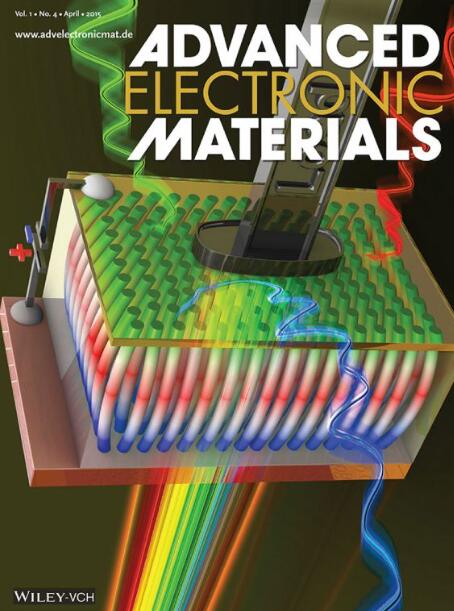Achieving Ultra‐Low Contact Resistance via Copper‐Intercalated Bilayer MoS2
IF 5.3
2区 材料科学
Q2 MATERIALS SCIENCE, MULTIDISCIPLINARY
引用次数: 0
Abstract
The high contact resistance between MoS

通过铜嵌入双层MoS2实现超低接触电阻
MoS2与金属之间的高接触电阻阻碍了其作为克服亚3nm尺度硅基场效应管短沟道效应的理想解决方案的潜力。从理论上设计了一种基于MoS2的晶体管,其特点是双层MoS2连接到Cu插层双层MoS2电极。在0.6 V时,接触电阻为16.7 Ωµm(锯齿形)和30.0 Ωµm(扶手形),接近甚至超过单层材料的30 Ωµm量子极限。这种低电阻是由于消除了隧道势垒和产生了欧姆接触。此外,小的接触电位差可以降低工作电压。这种嵌入设计为实现二维电子器件的低接触电阻提供了一种新方法。
本文章由计算机程序翻译,如有差异,请以英文原文为准。
求助全文
约1分钟内获得全文
求助全文
来源期刊

Advanced Electronic Materials
NANOSCIENCE & NANOTECHNOLOGYMATERIALS SCIE-MATERIALS SCIENCE, MULTIDISCIPLINARY
CiteScore
11.00
自引率
3.20%
发文量
433
期刊介绍:
Advanced Electronic Materials is an interdisciplinary forum for peer-reviewed, high-quality, high-impact research in the fields of materials science, physics, and engineering of electronic and magnetic materials. It includes research on physics and physical properties of electronic and magnetic materials, spintronics, electronics, device physics and engineering, micro- and nano-electromechanical systems, and organic electronics, in addition to fundamental research.
 求助内容:
求助内容: 应助结果提醒方式:
应助结果提醒方式:


